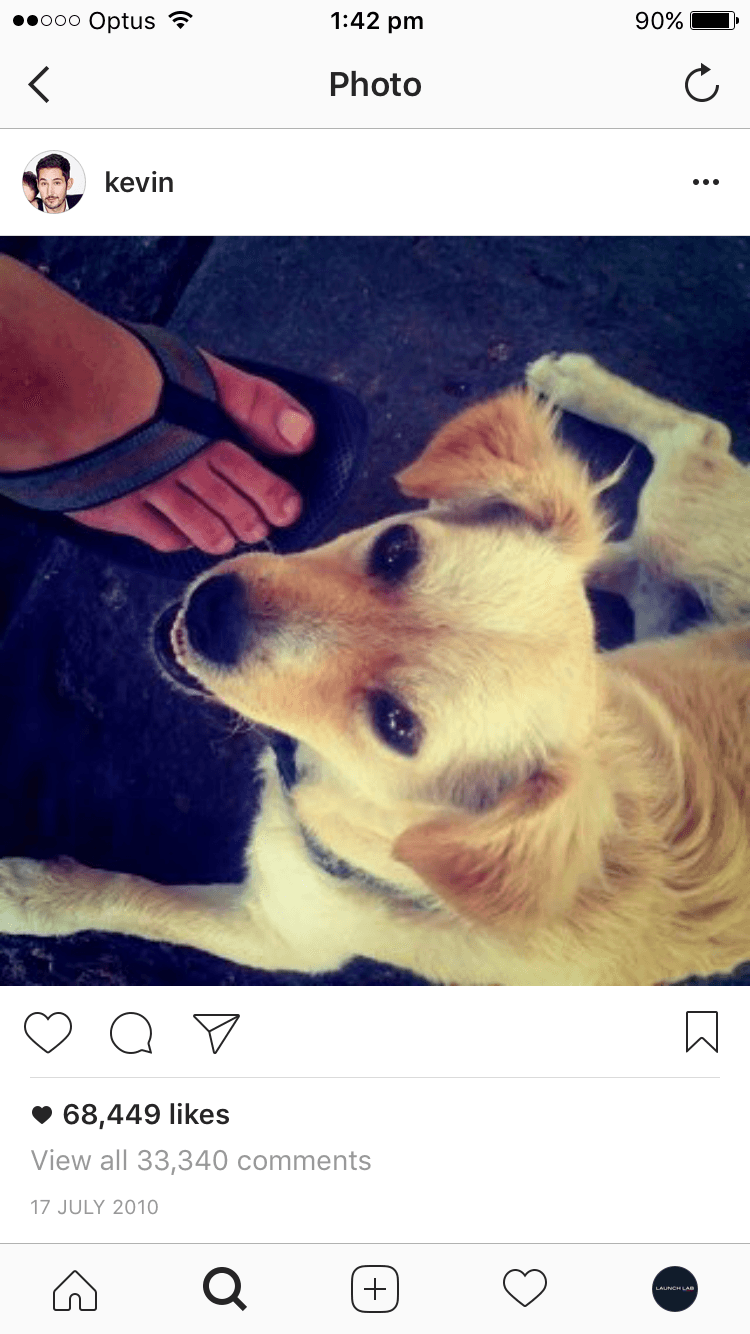I think it must be human nature. You know, that part of your brain that thinks up a great startup idea and then starts attaching feature after feature to it.
After all, who is going to use your product when it only does this one thing?
Whoa, hang on!
As a startup your main constraints are time and money. You don’t have time to develop loads of features and you (probably) don’t have enough money to build all of the great features your highly creative brain keeps throwing at you.
So, build one feature and make it amazing. Make it that one feature that defines your product. Focus on that feature. Put it at the centre of everything you do.
Do you remember a time not so long ago when you had to stop and think about sharing photos online because the photos you took didn't look as good as the ones your friends were sharing? Then came an app with the promise of making everyones photos look amazing (you guessed it, none other than Instagram).
After pivoting from an app called Burbn, Instagram focused on making shared photos look awesome using filters. They nailed it. There are many more features now thanks to a pile of Venture Capital money and a billion dollar buyout by Facebook.
Solve one problem
That one thing should be the feature that solves your target audiences main problem. For example:
- Problem: I’d love to share more photos but mine don’t look very good. Solution: Filters (Instagram)*
- Problem: SMS can be expensive. Solution: WhatsApp**
- Problem: “I wish these photos I am sending this girl would disappear” - Reggie Brown (the guy who had the problem but isn’t a Snapchat founder. Yet he made $157.5 million from Snapchat). Solution: Ephemeral photos - Snapchat
- Problem: I can’t make a backup because I don’t have a memory stick with me. Solution: Dropbox
- Problem: Going to a shop to rent and return movies is a pain, especially when you get charged late fees. Solution: Netflix
- Problem: There's a large conference in town and all hotels are fully booked. Solution: Airbnb
Fun fact: This is the first photo ever taken on Instagram. It was taken by the founder, Kevin Systrom, using the filter X-PRO2:

Fun fact: It's estimated that apps like Whatsapp have cost world cell carriers upwards of $33 billion in SMS fees in 2013 alone.
Launching with more than one key feature also means losing focus. This quote from Mick Liubinskas in his post Focus means saying no sums it up nicely:
"... if your product does more than one core thing, then you are running multiple businesses and making life harder for yourself. Get one working first (and I mean really working so that a lot of customers love it and use it all the time, not just functioning) and then maybe add more."
Product roadmaps
Remember all those other features you thought of? They're not wasted. Write them down.
Set up a Trello board and arrange them into a product roadmap (here are some great examples of a product roadmap using a Trello board).
Give the features an order. This can become your very own product roadmap. But, focus on that one thing. That thing that will keep users coming back. Once they’ve fallen in love with that feature and you’ve found product-market fit ... start adding features. Start making it better.
Users love new features
If your one killer feature solves a big problem for people and you find product market fit you’ll get plenty of opportunity to add all those features you jotted down over the months. Adding new features once you have product market fit has benefits too:
- keeps you ahead of the competition
- makes it more difficult to copy
- makes it even stickier for your users
- shows your users that something is happening and that the product is always getting better
- new features give you a reason to communicate with your users and with the press
Plus, adding these feartures when you already have a product in market means you can get your users to tell you what features are most important to them. You can then prioritise those features.
How do you know what the killer feature is?
It's obvious if you follow this key startup rule ... Don't start with an idea, start with a problem that you have evidence exists, then develop a solution.
If that doesn’t help, scroll back up to the examples listed above. Get it?
Developing Startups
Need help developing a startup or a chatbot? We're startup web application developers in Sydney & Canberra.
